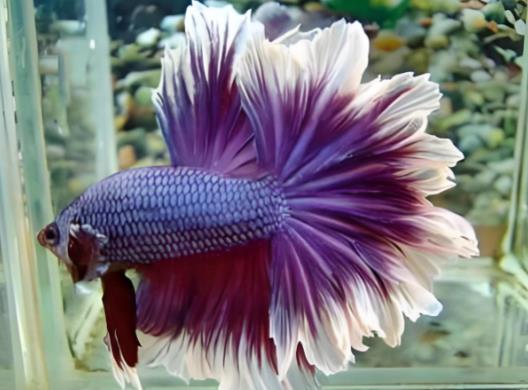Here’s a detailed guide to betta fish breeding, incorporating scientific methods and practical techniques for key stages such as pairing, spawning, and hatching:

I. Pre-Breeding Preparation
Selecting Breeding Stock
Male Betta: Choose a robust individual with a fully extended tail fin (e.g., half-moon males should have a 180° spread) and obvious nest-building behavior (bubble nest construction). Opt for adults over 4 months old, and house them alone for 1–2 weeks before breeding to build stamina.
Female Betta: Focus on the plumpness of the abdomen and the protrusion of the breeding tube. Select females slightly smaller than males with vibrant colors (maternal genes determine over 70% of offspring traits). Gravid females will display visible white egg clusters in the abdomen and distinct vertical breeding stripes.
Environment Setup
Breeding Tank: A 30×20×15cm container is ideal, with water depth of 8–15cm (excessive depth increases the male’s burden of guarding eggs). Add almond leaves (to release tannins for antibacterial effects) and turn off filtration systems beforehand.
Water Parameters: Maintain a temperature of 26–28°C (Chinese bettas can tolerate 1–2°C lower), and a pH of 6.5–7.2. Use tap water that has been aerated for over 48 hours.
II. Pairing and Spawning Process
Inducing Estrus
Separate males and females with a clear divider for 3–5 days, allowing them to see each other for 20 minutes daily to stimulate hormone production. During this period, feed high-protein live food (e.g., bloodworms, brine shrimp) to promote follicle development.
The male’s nest is ready when it covers over 1/3 of the water surface with dense, compact bubbles.
Mating Behavior
Once the female is released, the male will wrap his body around hers to squeeze out eggs (each session lasts 2–3 seconds, repeated dozens of times). The eggs are pale yellow and approximately 1mm in diameter. Fertilized eggs will sink, and the male must retrieve them into the bubble nest within 30 minutes.
Key Action: Immediately remove the female after spawning (to prevent egg-eating) and leave the male to guard the nest. A typical breeding cycle lasts 2 hours, with 50–200 eggs laid.
III. Hatching and Fry Management
Egg-Guarding Stage
The male will continuously repair the bubble nest and remove unfertilized eggs (white, moldy ones). Do not feed him during this period to avoid accidental egg consumption. Incubation takes about 24–36 hours, with the fastest hatching at 28°C.
Fry Rearing
First Food: After 3 days, feed infusoria or newly hatched brine shrimp (confirm feeding by observing yellow bellies in the fry).
Water Control: Once the fry are free-swimming, start using a sponge filter. Change 1/3 of the water weekly (temperature difference ≤1°C). Sex can be distinguished around 45 days.
Troubleshooting Common Issues
Failed Pairing: Try a different female (acceptance varies) or extend visual contact to 7 days.
Egg-Eating: Feed the male well before breeding; place plastic film under the bubble nest to prevent eggs from sinking.
Winter Breeding: Maintain a constant 28°C and extend light exposure to 10 hours/day, though fry growth will be slower.
Following these steps can achieve an 80%+ success rate in artificial betta breeding. For specific varieties (e.g., snow spot half-moons, candy bettas), breeding conditions can be further optimized based on their traits.
